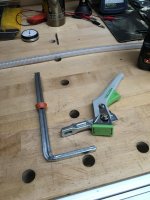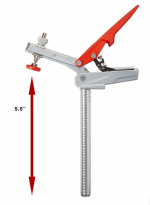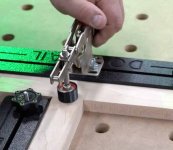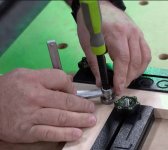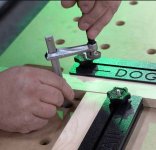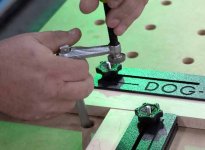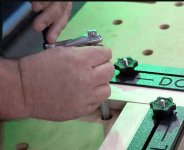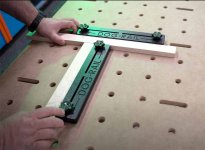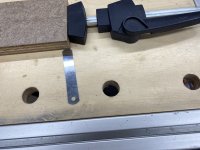smorgasbord said:
..
I'd think there'd be some evidence on the web, or even the Web Historian, showing rail clamps being used through the early tops when those tops were introduced.
Sorry but you are stretching this too far. This is not a court of law where we need to provide non-tainted evidence to you.
I am not sure you realise it, but in pushing your narrative you are now openly insulting the engineers which created the "Festo/Festool system" in the first place.
You may be too young to have even lived it. 1990s. The time of the FS rails, Basis, MFT, Systainers, PlugIt, Centrotec, LR 32 and the accessories concept which were developed into a single unified "Festo/Festool system" by a single team of engineers.
What we take for granted today was THE thing then. The MFT is only one, possibly least significant of the items which were invented and developed as part of this system. The FS, the MFT, the Basis, later the CMS, the CS saws were ALL designed around the original FSZ style clamps which leveraged from the FS rails a decade prior to that.
I have mentioned this already above why there is no ad materials on how to use the MFT with rail clamps. I lived the time.
THERE WAS NO TV ADVERTISEMENT of the MFT. NO VIDEO. NO PICTURES. NO POSTERS IN SHOPS. NO ILLUSTRATED BOOKLETS. NADA.
BUT.
THERE WERE QUALIFIED DEALERS. Who took care of all the information "missing".
No, there was no Internet www page for Festool except a very simple static site with no details. It was 2000. Not 2010.
----
To repeat in simple straight language:
It was obvious to anyone who was not an idiot that you use the
only clamp Festool offers, THE Festool clamp with the new table that is obviously designed to use it with. Only a moron would waste expensive catalog space for showing the obvious usage when you have the budget for just 2-3 pictures to show the advanced uses on one page. Further, Festool is a German company. They do(did) no have the culture to write in a manual to not dry cats in microwaves. They just do not make manuals for nails that state to use a hammer. They just do(did) not. Deal with it. Sorry. That is life.
I could say today's young are more stupid. But that would be not only unfair but also wrong.
Reality is that documentation/videos/pictures are WAY cheaper to publish, so we take them for granted. That was not so in 2000. Far from it. You simply cannot look at anything prior to about 2010 when the broadband internet and digital photography revolutions were completed with the prism of "They did not document it, so it must not have existed!". People simply did not document their farts then. Simple as that.
/rant mode off

